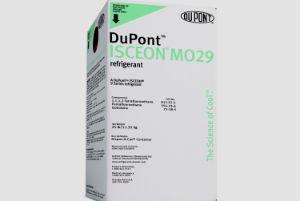 How to work so that the components of the system interact with each other.
How to work so that the components of the system interact with each other.
by DuPont
For the cooling system to function properly, it is important to check the compatibility of the cooling fluids with the lubricating oil and with the seals of the system, (elastomers of the joints and hoses). That is, it is necessary for the cooling fluids, lubricant and system components to interact with each other.
In addition to this, the lubricating oil must be mixed with the cooling fluid without reacting chemically, providing an effective circulation throughout the cooling system. As the lubricant also has the function of forming a protective film in the pipe, for oxidation to be avoided it is necessary that the chemical composition of the oil is within the specifications, so that there are no chemical reactions of contaminants with the seals. In case of doubts for the correct selection and handling of the oil, it is best to consult with the manufacturer of the equipment.
The interaction between a refrigerant fluid and the lubricant must ensure adequate oil circulation throughout the cooling system, the path of which follows from the compressor to the condenser, and the expansion device for the evaporator. Ideally, both should be miscible from each other; however, if there is no miscibility between them, it is important that there is a certain solubility between the oil and the coolant, but not their complete solubility.
If the lubricant and refrigerant are completely soluble, the lubrication of the compressor will be affected. On the other hand, in an immiscible mixture, the high viscosity will make it impossible to drag lubricating oil along the system. Another relevant characteristic condition to be treated is the hygroscopy of lubricating oils, that is, the property that certain materials have of absorbing water. The more hygroscopic, the easier it is for the material to absorb water.
This property is directly related to the way maintenance procedures should be performed. When working with more hygroscopic products, it is necessary to redouble attention at the moment when the system is open, being necessary that the operations are carried out more quickly.
In order to illustrate this concept, Figure 1 presents the difference in the behavior of mineral oil and POE oil in relation to water absorption. Exposed to the same environmental conditions, it can be seen that POE oil absorbs moisture more easily than mineral oil, which keeps the moisture level stable during the experiment.
It is important to note that the oil, used incorrectly with the cooling fluid, can cause various problems, such as the following:
- Formation of organic and inorganic acids;
- Corrosion;
- Poor lubrication;
- Carbonization of the oil;
- Compressor damage; etc.
For this reason it is very important to check the compatibility of the coolant fluid with the elastomers and lubricating oil used, before charging the system.
Another point to be highlighted is the chemical characteristic of each refrigerant fluid. The element chlorine, for example, reacts significantly with the elastomers present in the equipment. This denotes that the refrigerant fluid R-22 has the potential to react with the elastomers once it is a product of the HCFC family, which has chlorine in its composition.
In this case, when a change of HCFC refrigerant fluid for other alternative products is made, it is necessary that these components are observed and eventually changed in case they are not compatible.
These procedures of replacing HCFC refrigerant fluids with other products that do not have the potential for damage to the ozone layer are becoming increasingly common due to the Montreal Protocol. Known as Retrofit, the exchange of an HCFC fluid for an HFC type fluid, in an existing equipment, is a simple process that can be summarized in eight steps:
1)Establish the performance baseline with the current refrigerant fluid: the performance parameters of the system with the old refrigerant fluid and with the new refrigerant fluid must be similar.
2)Remove the coolant fluid from the system in a recovery cylinder: The cooling fluid should not be allowed to escape into the atmosphere.
3)Replace the filter dryer, so that there is no contamination for the new fluid, for example: moisture.
4) Vacuum the system and verify that there are no leaks.
5) Load with the new refrigerant fluid: In case the fluid is a mixture, it is important that the charge is made in liquid phase.
6)Start the system and adjust the amount of charge: Load the system up to 85% of the original load and boot the equipment. Check the operating parameters and finish adjusting, loading the fluid up to a maximum of 95% of the original refrigerant load that the system previously had.
7)Check the oil level.
8)Identify the system.
In this way, when performing a Retrofit procedure or periodic maintenance on the system, always remember to check the compatibility between the cooling fluid and the lubricant to be used, in addition to the system components, avoiding possible incompatibilities and guaranteeing the efficiency of the equipment.













